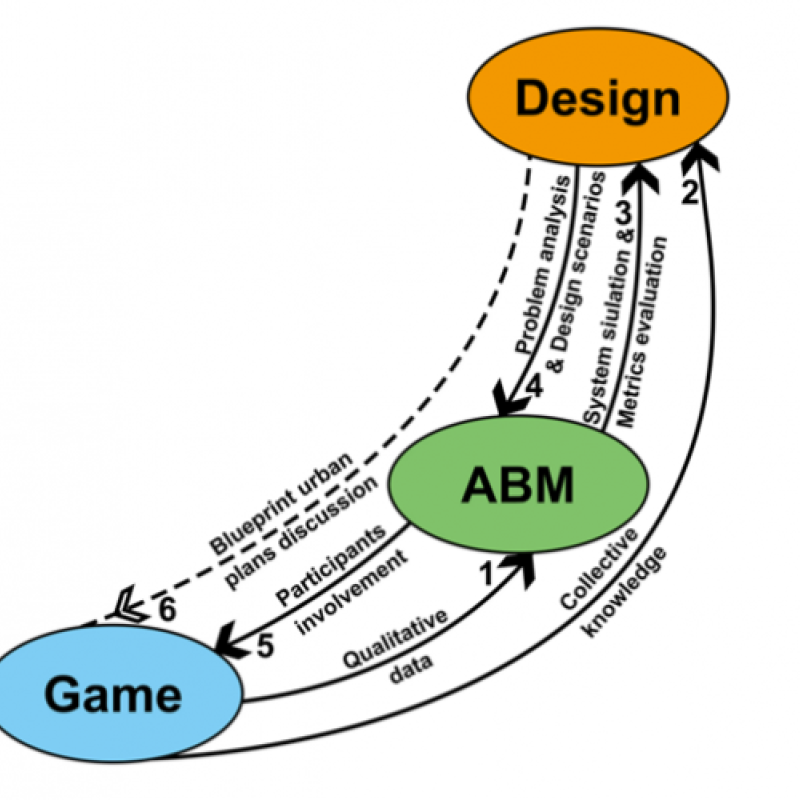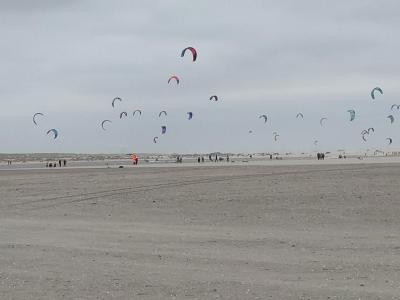Serious Gaming using Agent-Based Simulation for Anthropogenic Sandy Shores

For more information contact Ellen-Wien Augustijn (p.w.m.augustijn@utwente.nl)

Participatory modelling is a technique to engage stakeholders' implicit and explicit knowledge to create, e.g. simulation models. This technique is also referred to as co-creation or co-design. There are different ways to facilitate the participatory process. This can be done via workshops, and interviews, but also via serious gaming. Serious games do not focus on entertainment, but their aim can be learning or behaviour change. They are used in education and healthcare but can also be used in participatory modelling or co-design of simulation models.
Serious games, in this case, can be seen as interactive models with which the stakeholder can interact to play a role. This can be the role of the stakeholder itself or the role of another stakeholder. By playing the game, the stakeholder's behaviour can become more explicit, and the influence of the choices of a stakeholder on the complete process and system can become known.
Agent-based models are the most obvious choice for simulation co-design as they already include human behaviour (Yang et al., 2021). We can extend ABMs to allow for a gamer to interact with the simulation, and for data to be stored. This data can be analysed to retrieve information about the choices of the stakeholders in different situations. Within the Netlogo software, you can find several example models that are, in fact, games, like the Ant adaption model and the Lunar Lander model. You also see that Netlogo models are used on different learning sites like Go-Lab (https://www.golabz.eu/lab/island-biogeography) for educational purposes.
The case study of this MSc topic focuses on anthropogenic sandy shores in the Netherlands. These shores have been nourished as a “building with nature” approach. In the Netherlands, we have several sand nourishment projects including the Zandmotor and the Hondschbosse duinen. These areas combine different functions, including flood safety, recreation and nature. Because of these combinations of functions, many stakeholders are involved in the decision process (Rijkswaterstaat, Province, Municipality etc.), and the choice made by different stakeholders are less clear. Co-design can ensure that the stakeholder decision process is correctly represented in the ultimate model, and that stakeholders understand the model better.
This MSc project aims to design and implement a serious game based on an existing Agent-Based model for anthropogenic sandy shores in the Netherlands:
- Design combined ABM and gaming system
- Extent an existing ABM model, designed in Netlogo, based on the design system
- Test the integrated game with several stakeholders
In this research, you will work closely with a PhD student from the University of Twente. Via this PhD project, contact will be made with stakeholders and access to the ABM model will be provided.
This research topic aims to develop an interface for an existing Agent-Based Model that will allow this model to be used as a serious game. You will test the serious game with stakeholders (Rijkswaterstaat, Waterboard etc.) of Dutch artificial beaches (Zandmotor and Hondsbossche duinen) to make the decision process of the stakeholders more transparent.

-
Yang, L., Zhang, L., Philippopoulos-Mihalopoulos, A., Chappin, E. J. L., & van Dam, K. H. (2020). Integrating agent-based modeling, serious gaming, and co-design for planning transport infrastructure and public spaces. Urban Design International, 26(1), 67-81. https://doi.org/10.1057/s41289-020-00117-7
